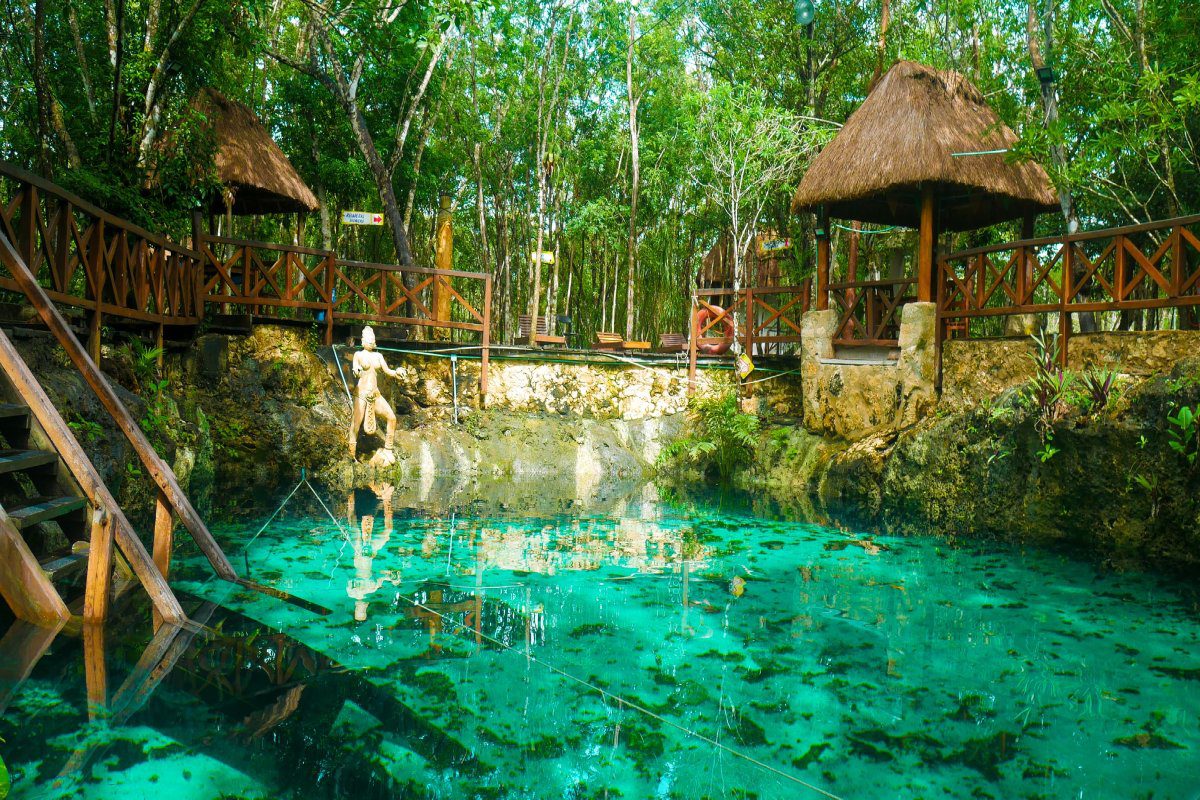Skift Take
Mexico’s risky policy to stay open while other countries closed during the pandemic has paid off for the state of Quintana Roo. The state wisely used the time to hone its brand as more than a beach-going destination and expand its air accessibility long term. The payoff is evident in recent surging tourism numbers.
While other destinations are slowly coming back to 2019 levels, one destination seems to be flying past theirs. There’s been a tourism surge in Cancun and surrounding spots; just look at traffic at Cancun International Airport. In June, 14 percent more passengers flew through the airport than in 2019. This is at a time when very few airports have reached pre-pandemic level passenger traffic.
It’s not only air traffic that’s impressive. Hotels are filled up during the summer. “We’re out of space,” said G Adventures Vice President of Product Yves Marceau. “Getting space has proven to be difficult.” By April, 90 percent of Cancun’s hotels were booked.
A big share of those arrivals aren’t just going to Cancun, the state of Quintana Roo’s most well-known destination. “If you go by numbers, we have more people in Riviera Maya than in Cancun,” said Quintana Roo Tourism Promotion Council Director of Strategic Planning Benjamin Jimenez.
Between January to June, Quintana Roo saw a 10 percent increase in tourist arrivals over the same period in 2019, according to Jimenez. Quintana Roo Tourism Promotion Council forecasts it will have 16 million tourists in 2022.
A big contributor to the surge is Mexico’s travel policy during Covid. The state was closed in April and reopened to international travel in June 2020.
“During the pandemic, Mexico’s approach to travel and tourism paid off. They never really shut down to tourism,” said Marceau. “[Quintana Roo] was always an area considered safe and pretty stable. There were always flights going and coming from there, especially to the North American market.”
Even during Mexico’s peak infection period, tourists continued to flow in. A significant share of the visitor surge have been these tourists returning, according to Jimenez.
In these past few years, Quintana Roo has pursued two strategies. One was “umbrella branding” where the state marketed itself as “a country” with a menu of options. “The first strategy we did was telling the world we are not just Cancun. We are the Mexican Caribbean,” said Jimenez. “We have 12 options to travel according to your needs.”
A visitor can take one flight to Cancun airport and go with their family to Cancun, with their partner to Isla Mujeres or another destination that fits their specific desires. “We told tourists you have 12 different options in case you want to relax, do adventure, feel romantic, learn,” he said.
Tourists have now come to see that the state has more than a beach and resorts. “What’s happened with the rise of non-Cancun areas like Playa del Carmen, you have a whole culture, cuisine and nature that people have discovered,” said Marceau. “The region has become more than the beach. For us it’s an adventure destination.”
Quintana Roo’s second strategy was to work with airlines to expand the state’s air connectivity. “We did a lot of meetings with airlines, especially Mexican and American airlines,” said Jimenez. “We have more flights and availability so it will be easier to get here.”
For 2022, the state had 18 million airline seats, 30 percent higher than in 2019, according to Jimenez. In the first quarter alone, 4.4 million seats were scheduled to pass through Cancun International, a 17 percent increase from the first quarter of 2019, according to Diio by Cirium.
“They’ve helped tour operators see the opportunity here,” said Marceau. “We’re looking at it with an eye to grow as one of our key destinations in Latin America.”
The Daily Newsletter
Our daily coverage of the global travel industry. Written by editors and analysts from across Skift’s brands.
Have a confidential tip for Skift? Get in touch
Tags: cancun, caribbean, coronavirus recovery, latin america, mexico, tourism
Photo credit: Quintana Roo, Mexico Roberto Carlos Román Don / Unsplash

